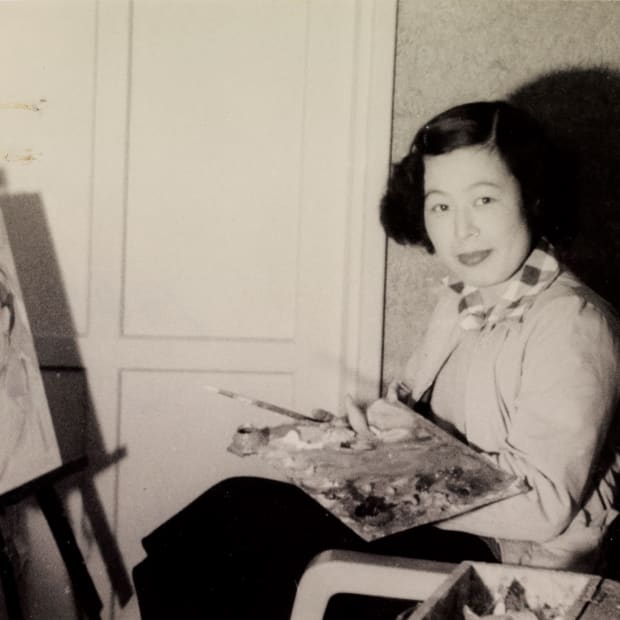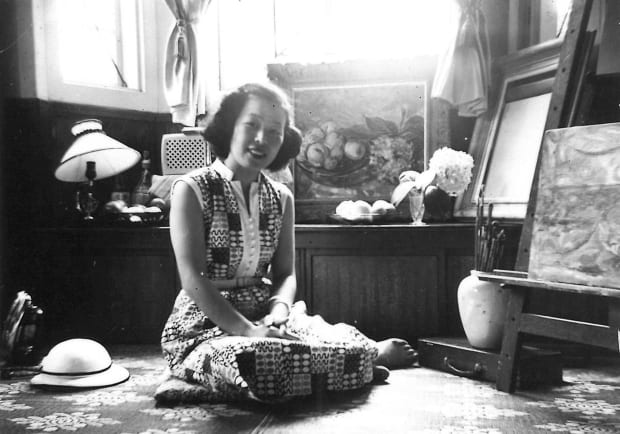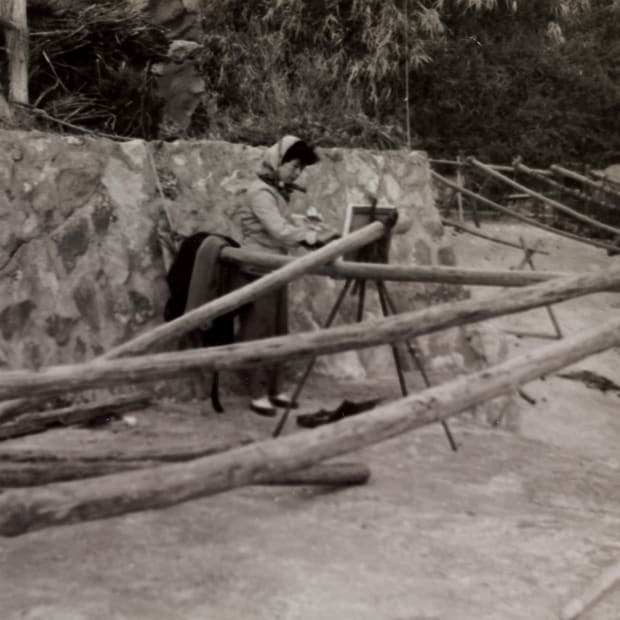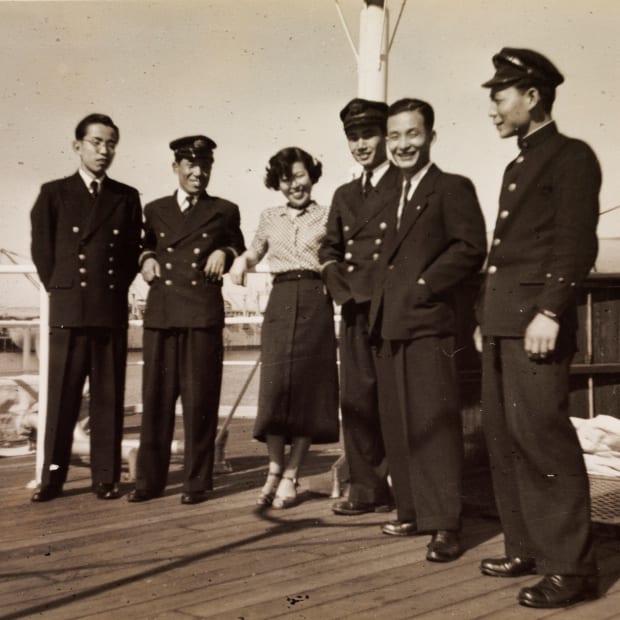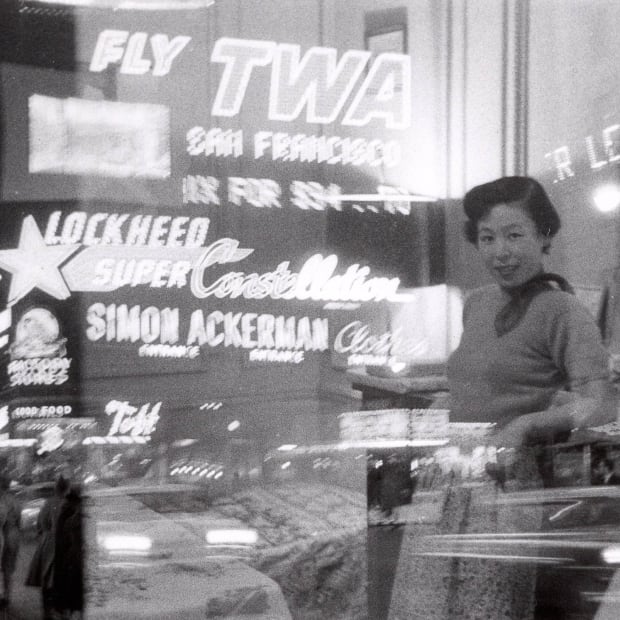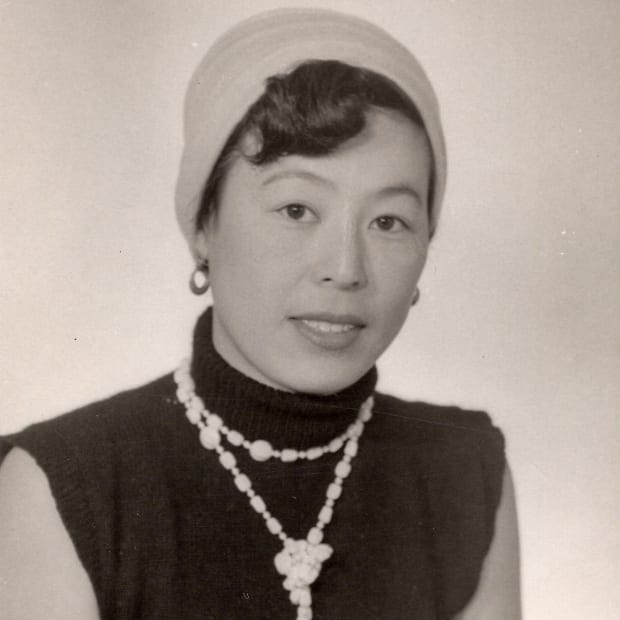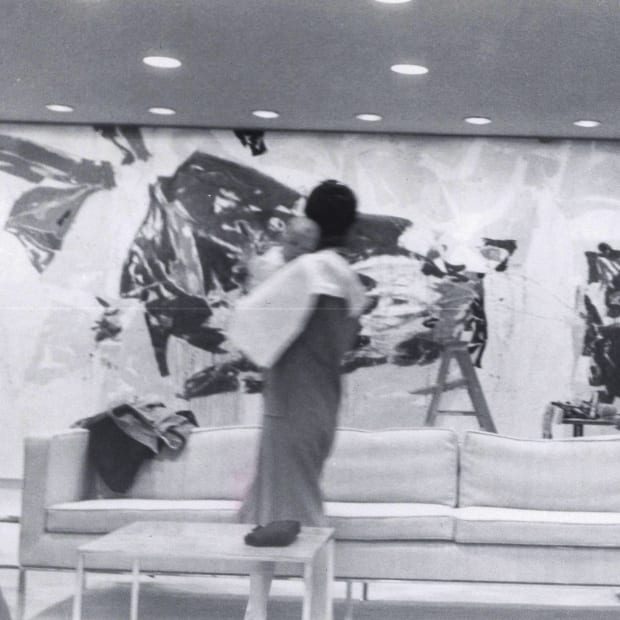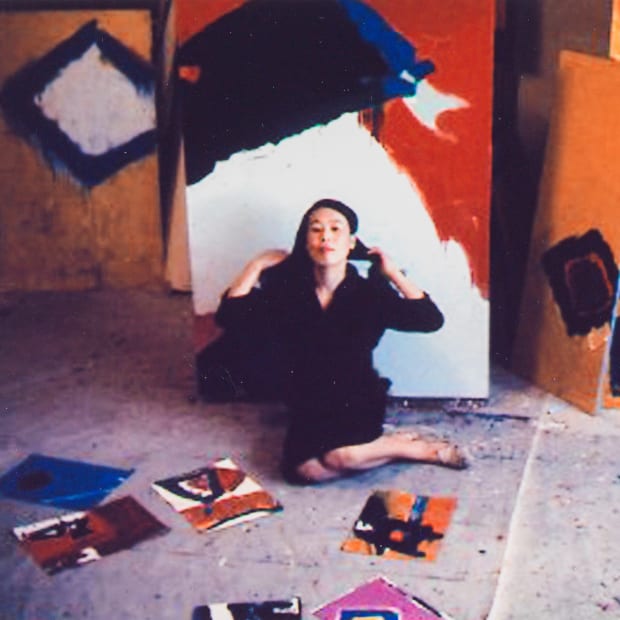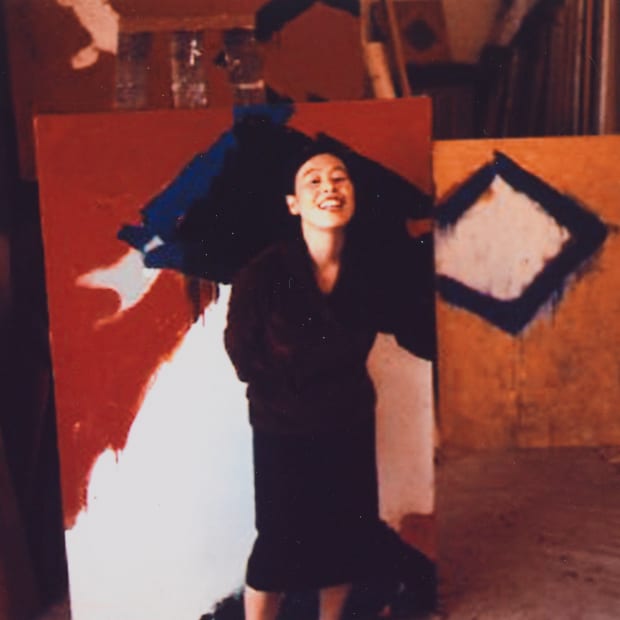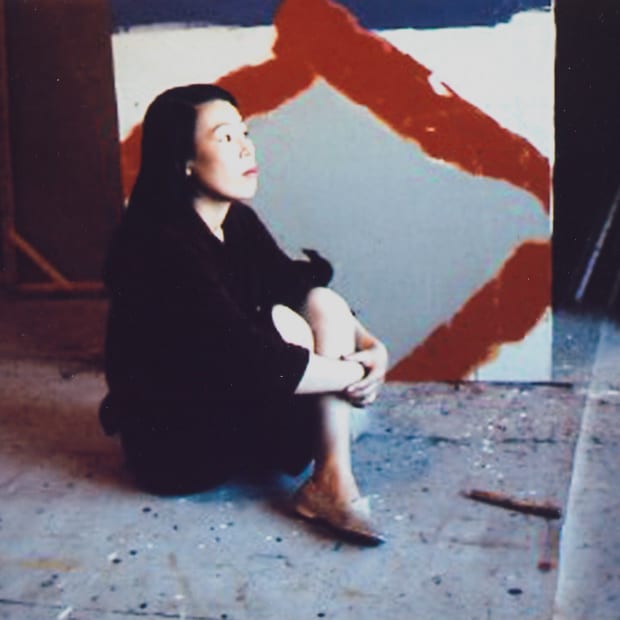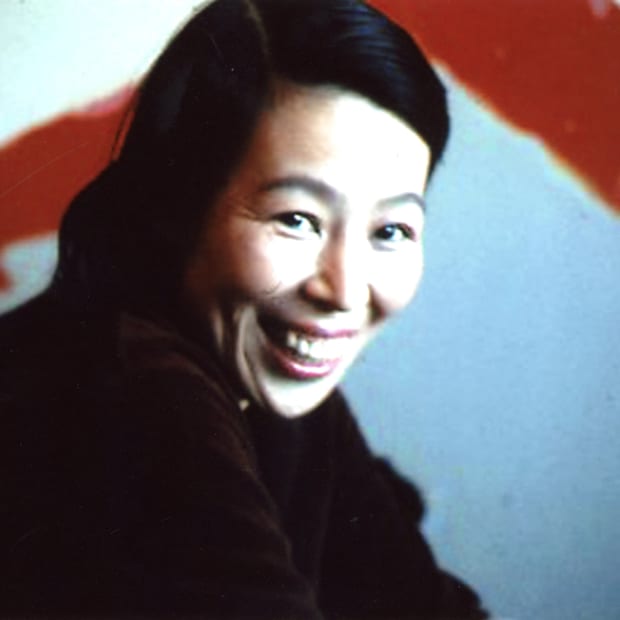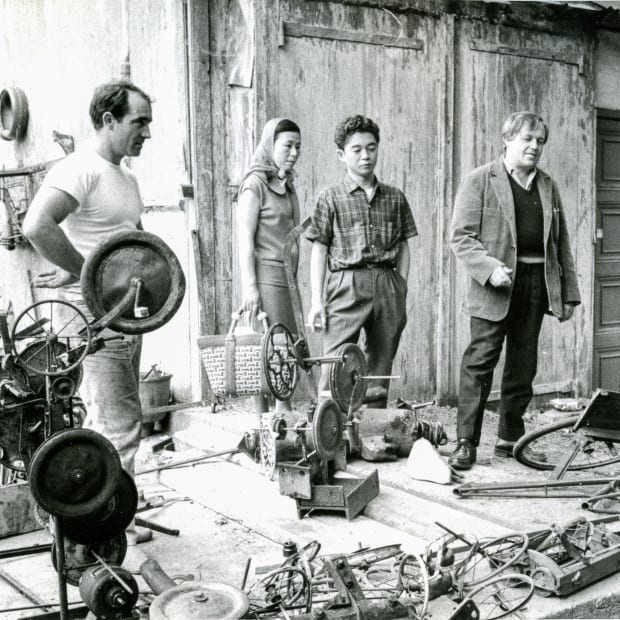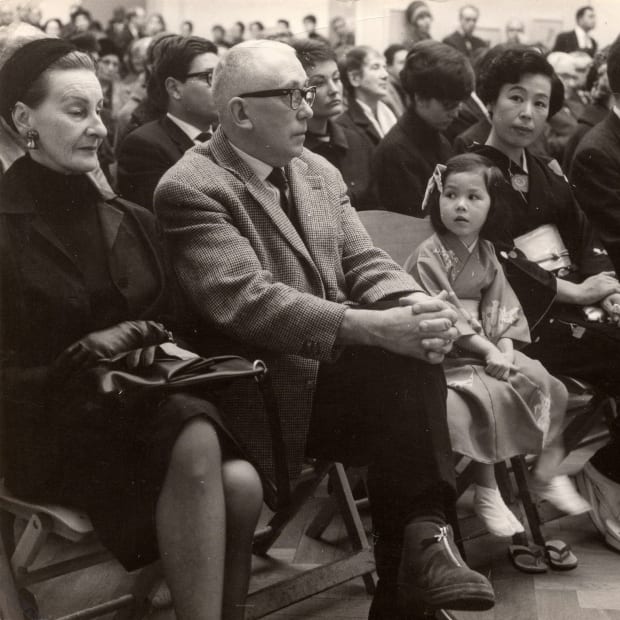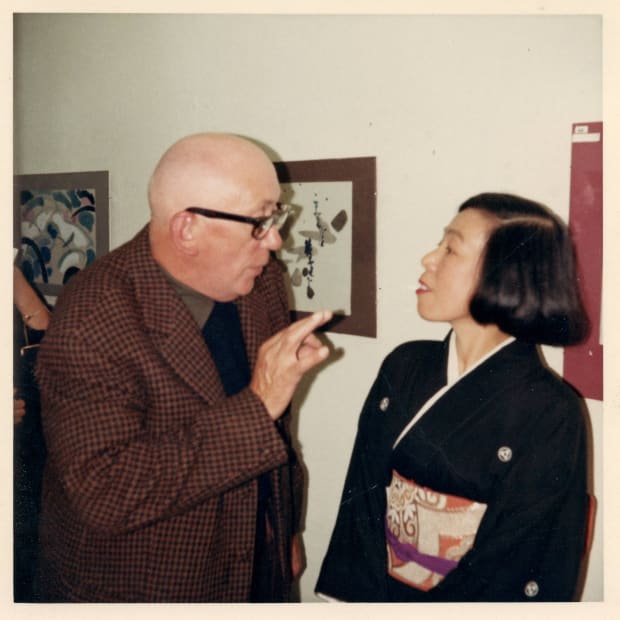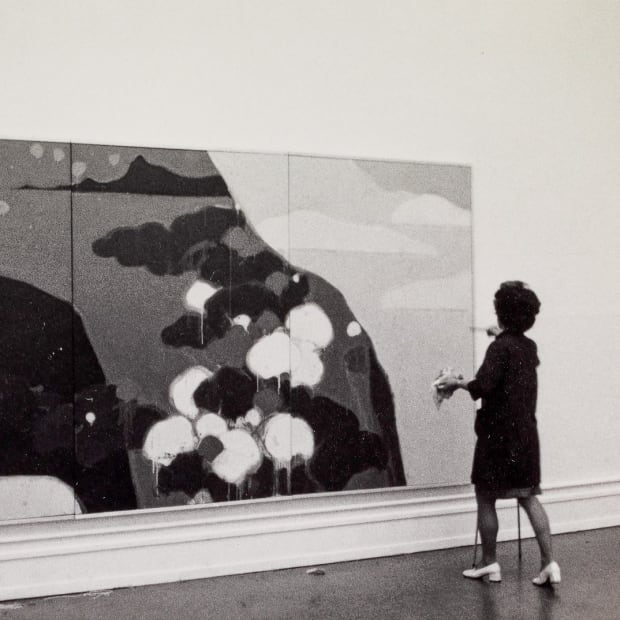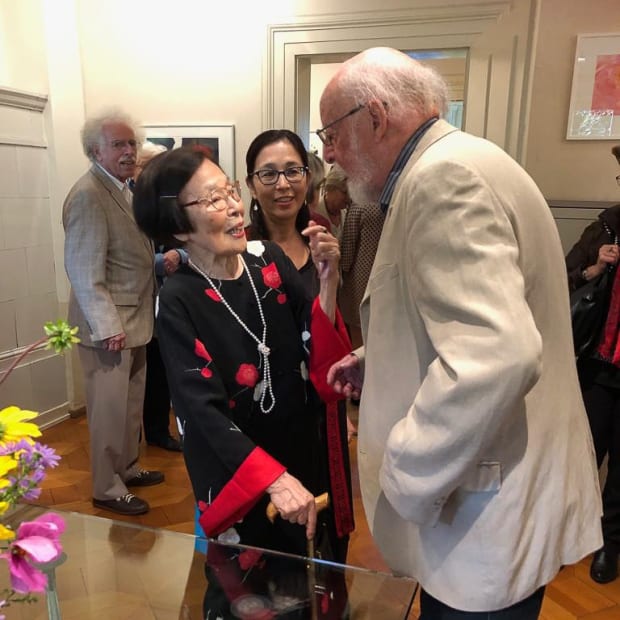Teruko Yokoi (1924-2020), a distinguished Japanese-Swiss painter, traversed a remarkable artistic journey that spanned continents and decades. Born in Tsushima, Japan, her early passion for art led her to study under Kouki Suzuki, grounding her in traditional techniques. In 1949, she relocated to Tokyo, refining her skills at the Joshibi University of Art and Design and gaining recognition through prestigious art exhibitions like the Issuikaitan and Nitten.
Yokoi's thirst for artistic exploration propelled her to the United States in 1954, where she immersed herself in Western Modernism at the California School of Fine Arts, earning numerous awards and scholarships that would provide the backing to support her continued development as an artist. Teruko’s time in San Francisco marked a pivotal moment in her career, as she synthesized Eastern and Western influences into a distinctive visual language of her own. Her solo exhibition at the California Palace of the Legion of Honor in 1955, followed by another solo exhibition at the same venue in 1956 further solidified her rising prominence.
The vibrant New York art scene beckoned Yokoi, and under the tutelage of Hans Hofmann and Julian Levi, she delved into Abstract Expressionism, a movement that resonated with her bold and expressive spirit. Her talent garnered recognition, including prizes at the Philadelphia Annual Exhibition and the Corcoran Gallery of Art's Biennial Exhibition.
Teruko’s career continued to flourish as she developed her signature motifs and refined her skills, drawing on influences from her teachers, peers, childhood in Tsushima and social circles she inhabited in San Francisco, New York, and eventually Paris and Tokyo. Movements within abstraction such as color field and action painting are represented in her early works as she experimented with these styles. Natural abstraction, with its heavy emphasis on landscape and the environment remained foundational throughout her career, along with influences of calligraphy, haiga and other forms of Japanese poetry and flowy motion established in her early works.
In 1958, Teruko married fellow abstract artist Sam Francis, and in 1960, they moved to Paris, where Yokoi continued to engage with the avant-garde. Influences of Art Informel and permutations of her experimentation with abstraction began to appear during this period as she worked on some of her masterpieces that would eventually be shown at major solo shows and retrospective in London, Japan, New York and Switzerland. Teruko and Sam also had some influence on each other as Sam was entering his period of Japanese and Western influence in the 1960s and Teruko was showing at Minami Gallery, Martha Jackson Gallery and at the ICA show in London.
However, it was her move to Bern, Switzerland, in 1962 that marked the beginning of a long and fruitful chapter in her life. She became an integral part of the Swiss art scene, exhibiting regularly at Galerie Kornfeld and participating in significant shows like the Kunsthalle Basel Exhibition, Berner Kunstausstellung at Kunsthalle Bern and her final retrospective at Kunstmuseum Bern in 2020. In 1991, she solidified her ties to Switzerland by obtaining Swiss nationality and citizenship of Bern. Although regularly showing in Switzerland after settling in Bern, Teruko continued to show in group shows and major exhibitions in Japan, Los Angeles, and Germany.
Yokoi's oeuvre is characterized by abstract expressionist compositions that often evoke the natural world through recurring motifs and forms. The Diamond form is one that continuously occurs throughout her career and across mediums, emphasizing the iportace she placed on these motifs and symbolism in her work. Her style, a harmonious blend of symbolic and naturalistic elements, reflects a profound engagement with themes of memory, time, nature, and light. The interplay of abstraction and representation in her paintings invites multiple interpretations, showcasing the perceptual effects of nature while remaining open to symbolic readings.
The establishment of two museums in Japan dedicated to her work, the Teruko Yokoi Hinageshi Art Museum in Ena and the Yokoi Teruko Fuji Museum of Art in Fuji, is a testament to her enduring legacy and the profound impact she made on the art world.
Yokoi's artistic trajectory serves as an embodiment of the power of cross-cultural exchange and relentless artistic pursuit. Throughout her career, Teruko has shown resilience in her struggles as a woman artist, a divorcee, and a single mother, breaking ceiling after ceiling while never holding another profession in her adult life. Her ability to harmonize Eastern and Western traditions, creating a unique and compelling visual language, cements her status as a trailblazer in modern art. Her work continues to inspire and challenge viewers, reminding us of the boundless possibilities of artistic expression.
-
BIOGRAPHY
-
-
-
-
-
-
-
-
FEATURED EXHIBITIONS, PUBLICATIONS AND PRESS
-

TERUKO YOKOI (SOLO)
Marlborough Gallery - New York, New York, United States - 2024 7 Mars - 20 Avril 2024 -

TERUKO YOKOI - TOKYO, NEW YORK, PARIS, BERN
2020 Kunsthalle Bern Museum ExhibitionTHE EXHIBITION Teruko Yokoi. Tokyo - New York - Paris - Bern traces the story of an extremely prolific and vibrant artist whose work emerged in the shadow and in... -

ArtSeen
Teruko Yokoi Avril 1, 2024Elizabeth Buhe, a critic and an art historian based in New York, covered the recent Marlborough Gallery Chelsea New York solo exhibition of Yokoi's work simply titled Teruko Yokoi. She... -

Uncanny Sensation
Teruko Yokoi's Search for Lost Time Mai 1, 2024Richard Speer, Art Critic and Curator based in Portland Oregon, wrote an essay on Teruko Yokoi, premiering in the May 2024 issue. In this essay, Speer weaves themes from the...
-



